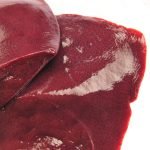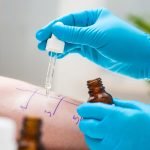Hydrotherapy- Part 4
JAMES SENSENIG, ND
LETITIA DICK-KRONENBERG, ND, VNMI
This column is transcribed from a weekly live conversation produced by the Naturopathic Medical Institute (NMI). The goal of NMI is to preserve and promote the principles of naturopathic philosophy through clinical application, in your offices and in your communities, every day. This lightly edited transcript (by Emily Kane, ND) is the final part of a 4-part conversation between Drs Jim Sensenig and Letitia Dick-Kronenberg, which took place on September 13, 2017.
Charting System
Dr Sensenig: How do you chart a patient’s hydrotherapy treatments in the clinic? Also, how many treatments in all do you usually do with a patient?
Dr Dick-Kronenberg: Most of the time, when a patient comes in for hydrotherapy, there’s not a separate SOAP note that’s done. It is simply charted as a therapy. There’s a customary sequence of the hot, cold, and sine-wave stim, and if the therapy is altered, you can chart that. It’s listed in a chart as 1, 2, 3, 4, 5, 6 – these are the steps you take. Charting it this way, my hydro tech can read the chart and knows exactly what therapy to give and how I may have altered the treatment. The charting doesn’t take a lot of time.
Let’s say I have someone who had a car accident and I’m treating an injured shoulder. If we need to do an insurance report, for example, I can go back and recreate a report from that. I can say something like, “We did 5 therapies. I did current and extra stim through the shoulder.” So, we don’t spend a lot of time with each patient doing a separate SOAP note each time. The schools are teaching students to use a separate SOAP note, but there’s no need.
It is a mini-visit, though. I do check a patient in. I listen to their heart tones and their digestive tones. I determine what therapy they need, and I determine whether they’re on track with the prescription I gave them at their initial visit. Most patients will need a series of 10 to 15 hydrotherapies. They should be done as closely together as possible. In my clinic in Spokane, a lot of patients come from quite a distance, so they can’t be in there 3 to 5 times a week. I tell these patients that every treatment they can get is a benefit and that if they can hit it once a week, that’s great. However, once a week is not optimal when you’re treating a chronic condition like MS or lupus or emphysema. You want that person in more often, if at all possible. Often, the critically ill people are not working a day job, anyway, so they’re usually able to come in more often. If they can’t come in 4 times a week, try to have them do twice a week and try to piggyback the therapies. In other words, instead of spreading it out Monday/Friday, try to do Monday/Tuesday. If you piggyback the therapies in this way, you get more of a rolling benefit in terms of stimulating the metabolism.
After a course of hydrotherapy – generally a series of 15 therapies – I do a checkup office visit with the patient again. I see where they’re at by looking at blood photography and Bolen analysis, and I evaluate their vitality.
If it’s a chronic situation – for example, a cancer patient – we’ll often give them a break for 1 to 2 weeks and then do another series of 10 therapies. It’s good to repeat as needed (break for a week, then 10 more sessions, ideally in 2 weeks). But if they are traveling to see me, within 5 weeks is acceptable.
For acute conditions, especially for a child with a problem like otitis, after 2 to 3 therapies they’re usually up and running.
How to Manage a Fever
Dr Sensenig: That’s really helpful, hearing about the different possible ways of doing it depending on the patient and the specific circumstances. What do you do with fever? We know that fever is an important part of the immune response, but a lot of parents of children with fevers have been taught to be very nervous about it.
Dr Dick-Kronenberg: We’ve never had to use Tylenol or any pharmaceutical to manage a fever. We’ve always used hydrotherapy. Fever should not be a scary situation. Parents are particularly worried if a child’s temperature gets up to 103-104 °F. But that temperature doesn’t worry me at all. You’re right, it’s not a big deal; it’s a sign of a functioning immune system. Again, we manage it very easily with hydrotherapy.
Contraindications
Dr Sensenig: Are there any contraindications to constitutional hydrotherapy?
Dr Dick-Kronenberg: There are few, if any, contraindications to doing constitutional hydrotherapy. As I commented earlier, the textbook Lectures in Naturopathic Hydrotherapy mentions pneumonia, cystitis, cancer, and some other conditions as contraindications. But I disagree; all of these are treated effectively with constitutional hydrotherapy. I saw my father do it for years. And I have done it many, many times. I’ve been in practice 27 years now. You do not need to worry about “overstimulating” the immune system. You have to stimulate the immune system in order to heal.
The only contraindication I could possibly think of would be treating a person who’s had an organ transplant. It’s possible that you could run the risk of stimulating rejection of the organ, but I would think that the body would already be on board with rejecting that tissue if it wasn’t compatible enough. However, you could be blamed if a patient rejected their kidney or some other organ, so be cautious about it.
I have done hydrotherapy on people with organ transplants, and I’ve never had a problem with it. When I mentioned this at a conference, a doctor raised his hand and said, “Wait a minute. I’ve done that. I did this on a kidney transplant patient. I didn’t even think about it being a potential problem. It totally turned out fine.” So it’s not just me with this experience.
I think a rejection of the organ is only going to happen if that organ is already on the way out. But just keep in mind that possibility.
Dr Sensenig: What about contraindications, if any, to doing the electrical stimulation part of the therapy?
Dr Dick-Kronenberg: There are definite contraindications to using different electrical stims. Diathermy is a little different because it’s a deep-heating unit. I do use diathermy a lot in conjunction with the constitutional treatments. We use it for pneumonia, but it should never be used over metal. If you have someone with a hip implant or new knee, for example, diathermy over that metal would heat it up too much. You also don’t want to use diathermy over silicone breast implants. A lot of women don’t tell you that they’ve had breast augmentation. They often don’t list that among their surgical procedures because they consider it cosmetic. But you need to know! Diathermy will heat up implants and melt them. Also, don’t do diathermy on anyone with a pacemaker. We used to have to turn off the diathermy machine in the building if someone was coming in with a pacemaker. That’s why they used to have signs at places like McDonalds that said, “Microwave in use – if you have a pacemaker, don’t enter.” The newer pacemakers use a different technology that makes them tolerate that frequency, so it doesn’t short-circuit them. But you still don’t want to put diathermy on the chest of a patient who has a pacemaker, since metal and other materials that can heat up quickly are in there.
Consider the effects of diathermy when treating someone with a fever. You can push the fever to go higher. Maybe you want to do that, and there are reasons why we might. Be aware that if a child has a temperature of 102 °F and has pneumonia and you’re putting diathermy to their lungs, their temperature could rise 1-2 points in an hour or 2. Just tell the parent that the temperature will go up a bit but to not worry about it because it’ll come back down.
The sine-wave current can move stones into ducts. You might have a patient with kidney stones or gallstones, and maybe you don’t even know that, and then they go home after the therapy and say, “Hey, I’ve got this pain.” You could have potentially stimulated that stone into the duct. However, that’s very rare. Most of the time, you know that a patient has gallstones, and you’re intentionally treating them because you’re trying to move the stones out of the duct. There is a safe way to do that with sine-wave current. There’s also a protocol for moving these stones using hydrotherapy.
Physical therapists are taught to not put sine wave over a clot, such as a venous clot in the leg, since doing that could stimulate the clot to break loose and go to the lungs. So, this is another contraindication – placing sine wave directly over a blood clot. Same thing for a sore varicose vein: don’t put sine wave directly over it. What I do instead is run sine wave through the leg. I’ll place a pad on the foot and a pad on the hip.
A better approach is to use high-frequency, or Vita-Ray, current. If you do have a patient with a thrombosis, you can use high-frequency right over the area of tenderness. It won’t dislodge the clot, and it will help the clot to dissolve. I use high-frequency current like ultrasound, especially for tendon and ligament strains
Autoimmune Disease
Dr Sensenig: Students are being taught in many of our schools that you shouldn’t do any immune-augmenting therapies on a patient with an autoimmune disease. If you understand Vitalism and Naturopathy and all of the Vitalist modalities, you know that that’s exactly what you want to do.
Dr Dick-Kronenberg: That’s exactly what you have to do! You have to do that if you’re going to heal the patient because that’s the way the immune system is able to work.
In doing the hydrotherapies, you will never stimulate the body to do something it’s not ready to do; you can never stimulate it more than what the vital force can take. So, you are not going to cause damage or make the immune system go haywire. It is doing what it needs to do: to stimulate the emunctories to get toxins out. The body is trying to do that. What we need to do is help it in that process.
I know there have been postings with questions about patients with autoimmune diseases, like the white count going higher, or the platelets going higher… “Is that okay?” Yes, it is okay. We don’t know how long the body needs to do that, but it’s okay.
The medical approach is looking at those numbers and going, “Oh my God! That’s too high! You have to stop that. That’s the disease getting worse!” Wrong! It’s actually part of the body’s attempt to heal disease!
I don’t look at those numbers very closely. I look at how the patient is responding, how the patient is doing. How are they feeling? Are they getting stronger? Those are the things that are important. When you start looking at numbers on lab work but ignore how the patient is feeling, we will lose track of what’s working. We have to work with each individual, not try to fit them into some “standard normal.” White cells will rise when a patient’s immune system is working and they are healing.
I had a pediatric patient who came to me a number of years ago who, as an infant, had chronic UTIs. The parents were alarmed because after 3 hydrotherapies the white count went screaming high. I said, “Good! That’s what has to happen!” And the fever went up. Their medical doctor said, “Oh my God! This is out of control!” I had to nearly move heaven and earth to explain to the parents that this was okay. They hung with me another couple of days, the fever went down, the child was fine, and never had another UTI.
We know the white counts will rise, so if you look at them real closely, you’re going to freak out. But that’s the conventional medical approach. No wonder all they have is drugs.
Dr Sensenig: That’s what you want the white count for; that’s what the white cells do. But, if you’re on the conventional side, which is antithetical, in most instances, to a Vitalistic paradigm, you’re only treating the symptoms: When the white count gets to a certain number, now we gotta freak out about it, and try to suppress it or stop it.
Dr Dick-Kronenberg: You have to think like a naturopath on these things. We approach healing much differently because we trust in the body’s wisdom.
This column, based on the Vital Conversations of the Naturopathic Medicine Institute, will continue in next month’s NDNR.

James Sensenig, ND was a 1978 graduate of NCNM in Portland, OR. For over 40 years he maintained an eclectic practice in Hamden, CT. Over the years, Dr Sensenig held prominent positions in the various naturopathic colleges and the AANP. A champion of classical naturopathic medicine, Dr Sensenig received an Honorary Doctor of Naturopathic Philosophy degree from CCNM, and received numerous awards for his dedication to teaching the principles of naturopathic medicine.

Letitia Dick-Kronenberg, ND, VNMI earned her doctorate in Naturopathic Medicine in 1990 from NCNM. She then completed a 3-year residency with her late father, Dr Harold Dick. After his passing, she continued his classical naturopathic clinic in Spokane, WA, now over 60 years old. Dr Letitia has been in practice 31 years; is past adjunct faculty at Bastyr University; co-founder of the Carroll Institute of Natural Healing (a non-profit, post-graduate institute teaching the healing methods of Dr Otis G. Carroll); author of The Ultimate Text In Constitutional Hydrotherapy: A 100 Year Tradition of Clinical Practice; founder and senior Vitalist of the NMI; and an international speaker / medical educator.









